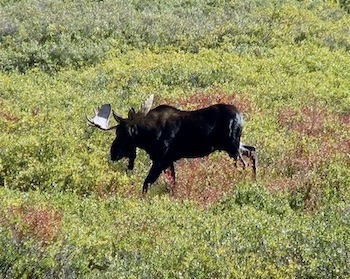The Great Path
Of course, there are many paths, but few qualify as a ‘great path.’ Most are relatively common.
 First, a great path is always through a wilderness, a place visited by few of the human kind, and whether through deep, dark, cool, towering pine forests broken by Aspin groves and wildflower meadows or a desert of sand, yucca, pear cactus, Mormon tea, apache plume, Indian paintbrush, and impossibly erect monuments of stone, a great path is lightly used and only wide enough, in most places, to walk single file, which makes it seem as if you were the only one on it, and are long and require patience. They furnish the exceptional fundament to declare our Love affair with the Holy.
First, a great path is always through a wilderness, a place visited by few of the human kind, and whether through deep, dark, cool, towering pine forests broken by Aspin groves and wildflower meadows or a desert of sand, yucca, pear cactus, Mormon tea, apache plume, Indian paintbrush, and impossibly erect monuments of stone, a great path is lightly used and only wide enough, in most places, to walk single file, which makes it seem as if you were the only one on it, and are long and require patience. They furnish the exceptional fundament to declare our Love affair with the Holy.
• • •
An excellent path is the work of many who have worked tirelessly for those coming after them to remove obstacles, such as trees fallen in some great wind, and maintain drainages so that excesses don’t degrade the way.
An exquisite path is always further in and higher up C.S. Lewis, The last battle. than most travelers care to partake. In our experience, the crowd usually thins conspicuously after the first miles. There is the possibility (or expectation/hope, depending on your comfort/experience of such things), characteristic of wilderness, of meeting creatures other than human-kind just around the next bend. A meet and greet with a bear sister is common in our woods. That prospect is often scary for the uninitiated. When we are on a great path, we oddly never seem to know exactly where the path is leading us, although the promise is always that wherever it ends, it will not be disappointing. Besides, the joy is in the following: arriving seldom seems to be the point.
Last, we know we are on The Way by the sacred silence it inspires. Flatlanders (a term coined by C.S. Lewis to describe those who, by the exercise of their will, refuse the ‘Way’ that is higher up) typically talk too much, preferring the sound of the preaching of their speculations to the still, small voice of wisdom, the lure of the not yet known. Flatlanders cannot respect the sacred silence of the path and so miss entirely the guiding voice intending to entice us onto the ‘Way’ less traveled.
Silence is the dwelling of the Sacred.
• • •
The Common Path
Common paths always begin the same, broad enough to accommodate the comings and goings of a great many who didn’t mean to go very far after all. The multitude always seems to know where they are going; the path they take is clearly marked, and they always return to where they started from, I suspect, unchanged. Hard-packed by many, bare dirt with no sign of the plant and animal kinds that once covered the place. You will meet a few fellow creatures on the ‘common’ path but flatlanders.
No great path starts at the parking lot, although we have noticed that the way to the beginning of the great path often is at the same parking lot as the common one, and the humble, who have embraced the great path confess to beginning their journey on the common one.